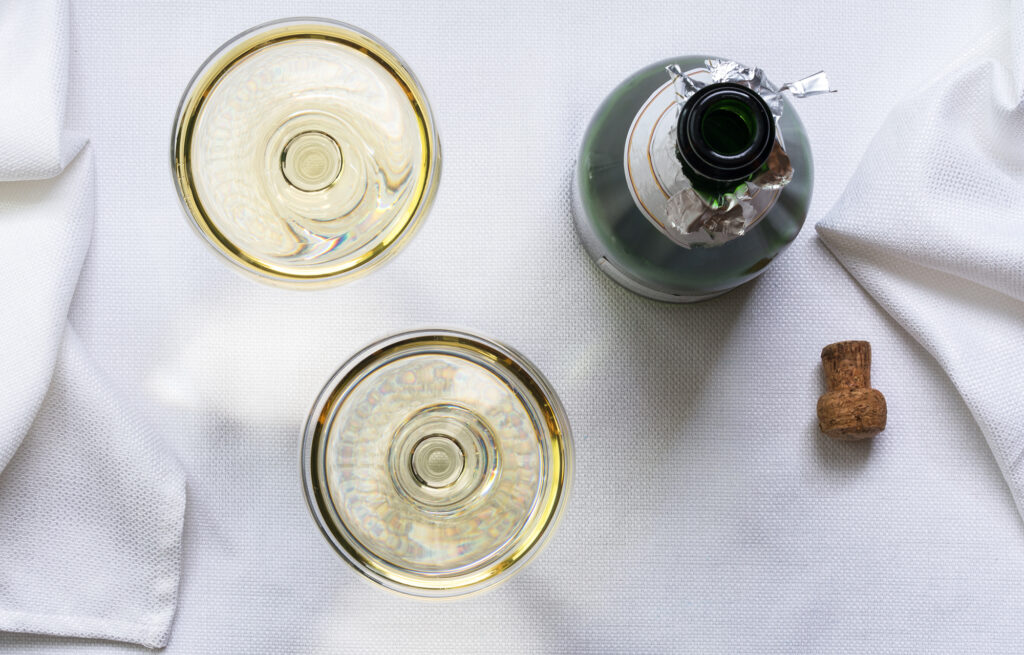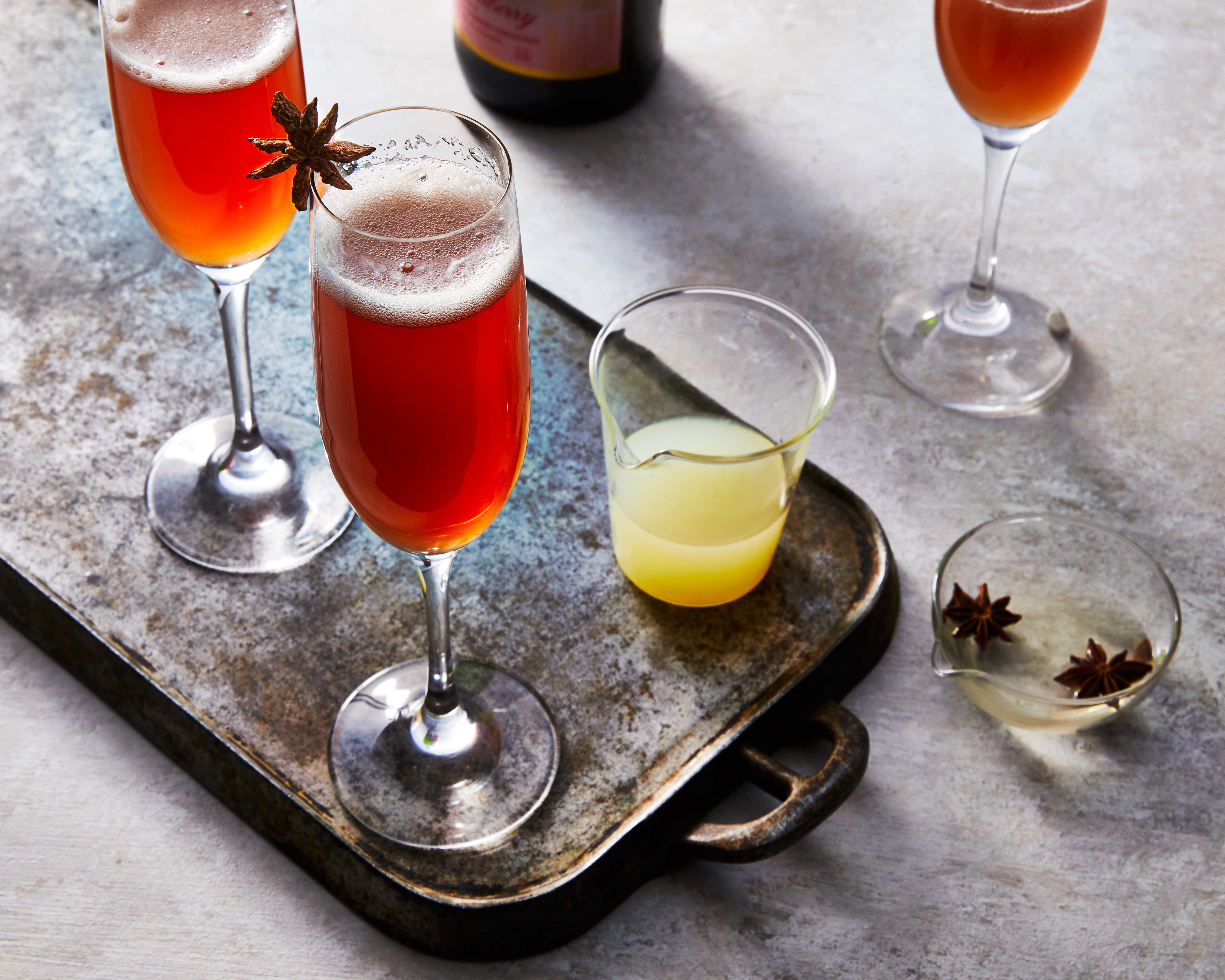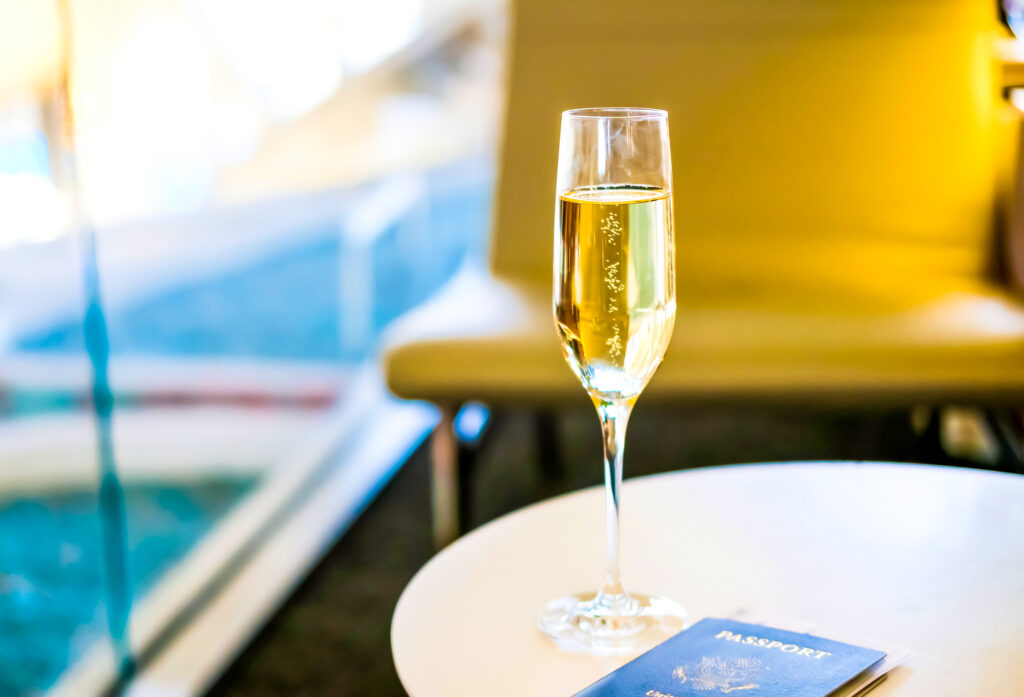
6 Myths You Need to Stop Believing About Sparkling Wine
All you need to know about the finest fizz.

For many who want to bring a little pop and fizz to their celebratory spread, a bottle of champagne might be the obvious choice. But sparkling wine? Well, it’s often pegged as the lesser-than option. The backup plan. A bottle you might open after you’ve enjoyed that almighty champagne.
However, insiders argue the reality of sparkling wines couldn’t be further from those antiquated myths. “Sparkling wine is a broad category term that covers any bubbly wine crafted through a variety of techniques,” explains Nicole Hitchcock, estate director and head winemaker at J Vineyards & Winery in Healdsburg, California. “There is still more work to be done to make American sparkling wines as visible on the world stage as champagne, but I know that our quality can compete with the best sparkling wines in the world.”
For news that’s worth toasting to, we’re separating fact from fiction on these common sparkling wine myths.

Michelle Lee Photography/Getty Images
Myth #1: Champagne Is Always Better Than Sparkling
At its core, champagne is just sparkling wine that comes from France’s Champagne region—and just because a bottle of bubbly isn’t French doesn’t mean it’s not delicious. According to Pauline Lhote, director of winemaking at CHANDON in Napa Valley, there are plenty of domestic options that live up to (and even exceed) champagne’s reputation.
“We have access to some of the most exceptional grapes grown anywhere in the world and can create sparkling wines that capture the bright fruit, acidity, and dazzling ‘California sunshine’ at an approachable price point,” she says. “Our wide selection of bubbles are all beautifully crafted in the traditional method and demand the same level of expertise, technical knowledge, and experience you find in Champagne, France.”
Instead of zeroing in on champagne versus sparkling wine, look for bottles that are made through the Traditional Method or “méthode champenoise,” a labor-intensive process that requires a significant amount of time and a keen attention to detail.
“California-produced Traditional Method sparkling wines have the advantage of being grown in a milder climate, infused with that famous California sunshine,” Hitchcock adds. “There is more latitude for winemaking creativity and stylistic variety, as we are not beholden to the more rigid regulations required for champagne.”
Myth #2: Sparkling Is a One-Grape Kind of Wine
Just because sparkling wine typically has a rich, golden hue doesn’t mean they all come from white grapes. While a lot of options are made with chardonnay, which brings acidity and freshness to each pour, Hitchcock says pinot noir and pinot meunier are also popular choices. “Pinot noir adds depth, structure, and a touch of fruitiness, while pinot meunier contributes softness and a rounder mouthfeel. [These] grapes work harmoniously together to create complexity and elegance in sparkling wine.”

Annabelle Breakey
Myth #3: Sparkling Wine Should Be Served VERY Cold
While a near-frigid glass of sparkling wine sounds incredibly refreshing, Hitchcock says you want to make sure your bottle isn’t too cold. “When it’s served too cold, you lose the opportunity to enjoy the full range of flavors,” she says. “Sparkling wine needs to be chilled, but not to the point where the aromas and nuances are hidden.” As a general rule of thumb, Hitchcock says to store your sparkling at a consistent temperature of 45 to 55 degrees Fahrenheit.
Myth #4: Opening Your Bottle Should Always Create Lots of Foam
Whether you’ve seen it in the movies or played out in real-life, we’re all too familiar with a sparkling wine bottle’s cork busting open—and a thick stream of foam spraying out. Sure, foam might look glamorous, but you’ll wind up wasting some wine. Instead of aggressively popping open a bottle, Hitchcock recommends a softer touch.
“The best way to open a bottle of sparkling wine is gently twist the bottle—not the cork—and allow the cork to come out softly with a slight ‘pop’ rather than a loud explosion,” she says. “This preserves the bubbles and helps ensure you’re enjoying the wine at its best.”

Alla Machutt/Getty Images
Myth #5: Sparkling Wine Pairs Best with Fancy Food
Sparkling wine is inherently fancy, so shouldn’t it always be paired with lobster and caviar? Not exactly. Though Hitchcock says sparkling wine pairs particularly well with seafood and pasta—a Dungeness crab tagliatelle would be a mouth-watering meal—there are plenty of cost-effective choices to also consider. “A favorite when eating out is an order of french fries alongside sparkling wine,” Hitchcock shares. “It’s not to be missed!”
Myth #6: Sparkling Wine Should Only Be Saved for Special Occasions
Believe it or not, you don’t have to wait for a fancy occasion like an anniversary, birthday, or holiday to break open the fizzy stuff. “I firmly believe that sparkling wine should not be reserved only for special occasions and is lovely to pop on a Tuesday evening, just because,” Lhote says. Translation? You have our full permission to make even the most average days special with a bottle of bubbly. Cheers!
